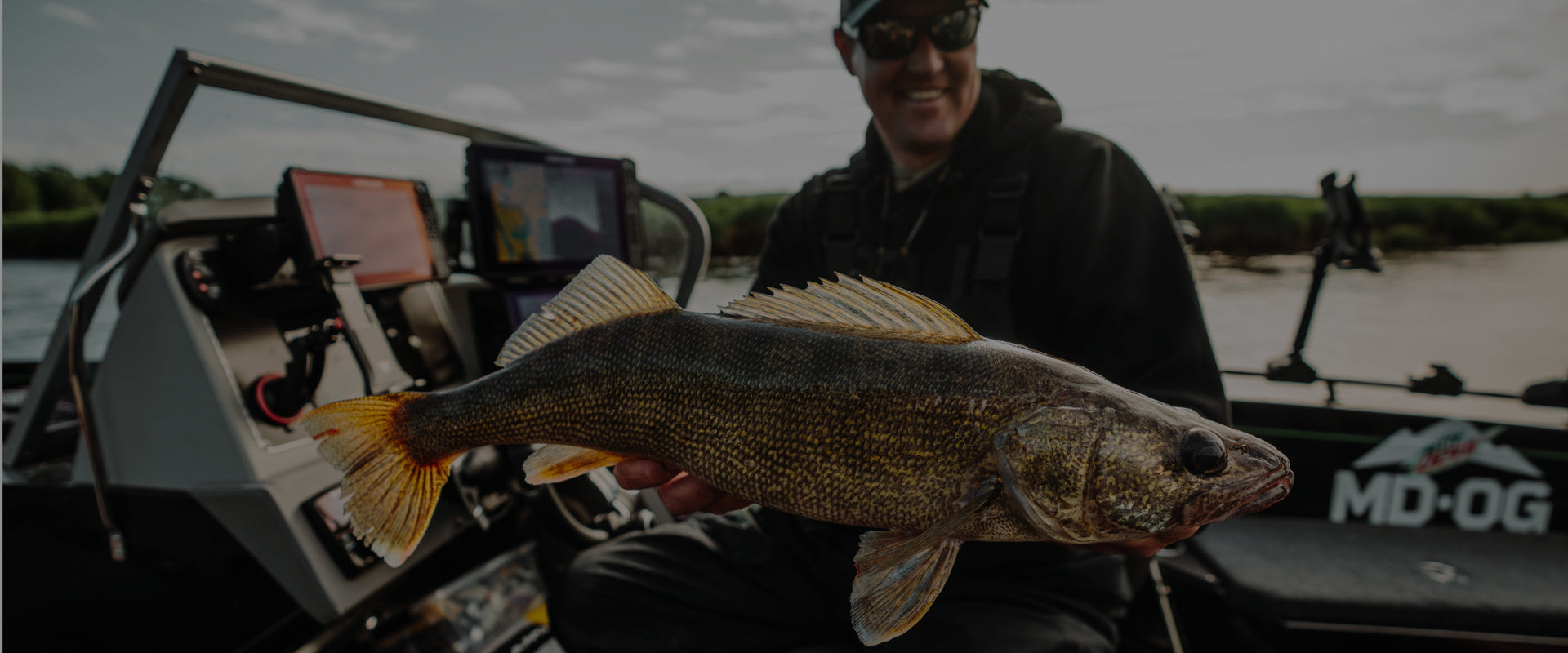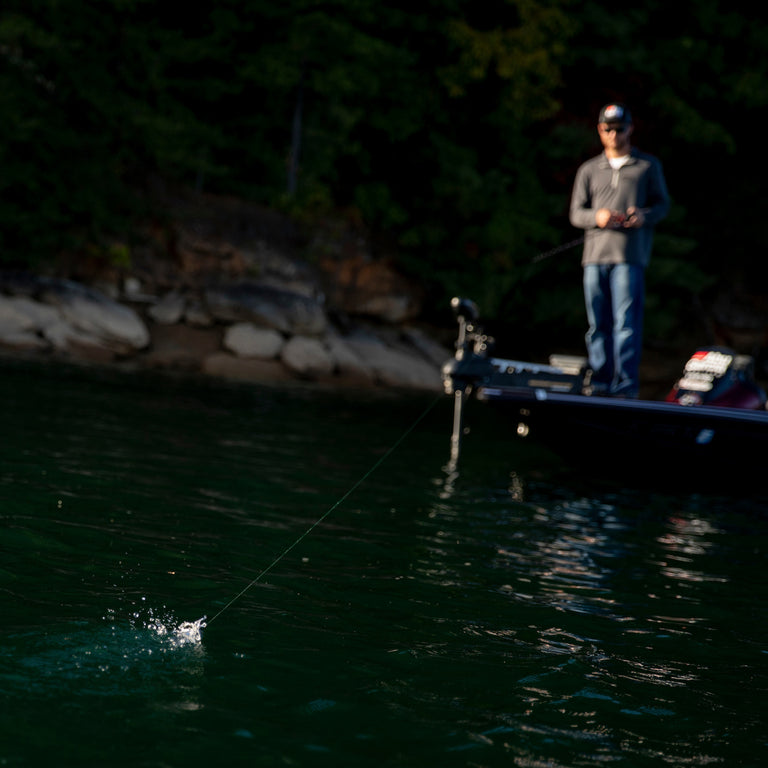
Get pro tips for catching walleye in rivers—find out which gear, bait, and techniques will give you the best chance...
Read More >
Deciding on what line to purchase for your specific fishing needs just got a whole lot easier! In this article, we will review the composition, pros and cons, and scenarios for utilizing fluorocarbon fishing line – relied on and trusted by angers who prioritize strength and stealth.
Already know what information you're looking for? Use our quick links to get you just where you need to go in this line guide so you can get back on the water faster.
Fluorocarbon fishing line is made from a polymer called polyvinylidene fluoride (PVDF), which is vastly different from the nylon used for monofilament line. Anglers trust and turn to fluorocarbon line when fishing environments call for low line visibility, high resistance, and impressive strength.
One of the main differences in the performance between fluorocarbon and other fishing line types is its density in comparison to the water, allowing it to sink and making it ideal for deepwater and bottom fishing. Fluorocarbon also maintains special refractive properties to keep it from reflecting light, which makes it essentially invisible underwater.
Even if you don’t choose to use fluorocarbon as your main fishing line, we suggest considering it as your leader material to give you sensitivity and invisibility, while avoiding some of the drawbacks of using fluorocarbon in its entirety.
Fluorocarbon is a top choice for those seeking stealth and strength, but knowing when and why you should use this line is crucial for a successful day on the water:
While the applications and variations of Berkley fluorocarbon line expand beyond what is listed in the chart below, this will give you an overview of the high-level types of line and most general guidelines for each to point you in the right initial direction:
While not as malleable as monofilament, there are still several knots that work very well for fluorocarbon fishing line:
Fluorocarbon has several advantages and specific properties that have resulted in its popularity among modern anglers:
While there are many benefits to using fluorocarbon line, it is important to recognize the minor drawbacks to understand if this is truly the line for you:
All said, fluorocarbon fishing line is sensitive, strong, and has more abrasion resistance making it great for fishing around structures and deepwater fishing but could be a little more difficult to handle for beginners. to a wide breadth of fishing needs. Not sure our fluorocarbon line is right for your next fishing adventure? Learn more about our other line type options to see if there is a better fit: